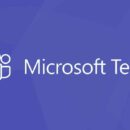Procurement, the strategic process of sourcing and obtaining goods and services, is vital for the success of any organisation. Understanding the various types of procurement methods is crucial for decision-makers to ensure efficiency, cost-effectiveness, and the best value for their organisation. In this exploration, we delve into the diverse procurement approaches, highlighting how each method can suit different organisational needs and scenarios.
Traditional Procurement
Traditional procurement, also known as design-bid-build, is the most common approach. It involves three distinct phases: the design phase, the tendering or bidding phase, and the build or construction phase. This method is preferred for its clear structure and defined stages, allowing for greater control over the quality and compliance of the project.
Design and Build
In this approach, a single entity is responsible for both the design and construction of the project. It’s a streamlined process that can lead to faster completion times and potentially lower costs. This method is ideal for projects where the design is not heavily specialised and time constraints are significant.
Management Contracting
Management contracting separates the design and construction phases. A management contractor is appointed to oversee the construction, managing various trades and suppliers. This approach offers flexibility and allows the client to have more direct input into the construction process – it’s particularly useful for complex projects requiring specialised expertise.
Public-Private Partnerships (PPP)
PPPs are a collaboration between a government entity and a private sector company – these are often used for large-scale infrastructure projects. The private sector bears the risk and management responsibilities, often bringing innovation and efficiency to the project. This approach is beneficial when public resources are limited, and there’s a need for private sector expertise.
E-Procurement
E-procurement utilises digital platforms to streamline the procurement process, and this approach offers increased transparency, faster processing times, and improved vendor management. By automating many procurement tasks, organisations can focus on strategic aspects like supplier relationship management and cost optimisation.
Green Procurement
Focusing on environmental sustainability, green procurement prioritises products and services that are environmentally friendly. This approach aligns with corporate social responsibility goals and can lead to long-term cost savings and a positive brand image.
Global Sourcing
Global sourcing involves procuring goods and services from international markets; it can offer cost benefits and access to new technologies or unique products. However, it also comes with challenges like managing logistics, currency fluctuations, and cultural differences.
Final Thoughts
Each procurement method has its unique advantages and considerations – organisations must carefully evaluate their specific needs, resources, and the nature of the project to choose the most suitable approach. For those looking to dive deeper into the world of procurement and explore tailored solutions, Procurement Australia offers a wealth of expertise and resources to guide you through the intricacies of procurement strategies. By leveraging the right procurement method, businesses can achieve optimal results, ensuring success in their endeavours.









